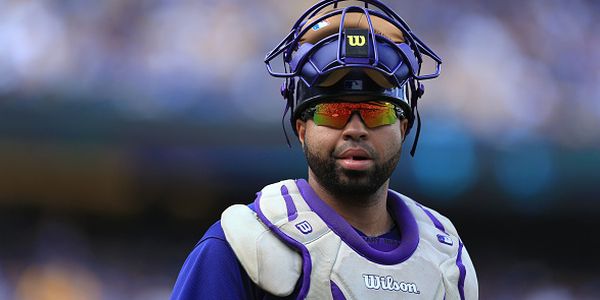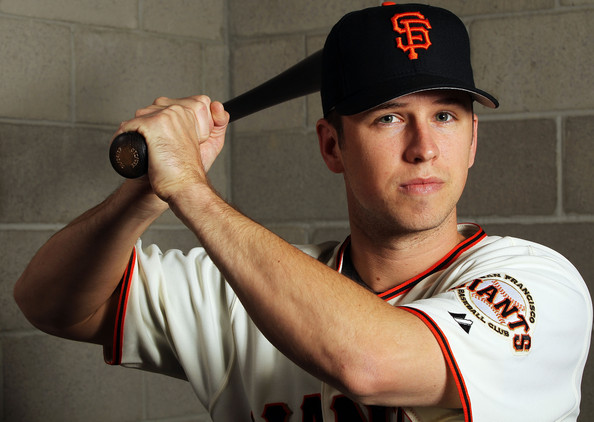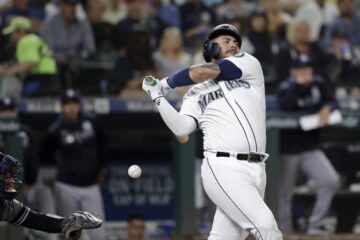2015 Fantasy Baseball: The Fielding Chronicles — Catchers

Why should I bother reading this?
Most fantasy baseball fans would bypass this article the first time they see the word “fielding” in the headline. Why should I care about fielding as a fantasy baseball player? That’s an excellent question and it deserves a serious answer. If you are giving me a couple of paragraphs of your time I’ll try to tell you why fielding is important. Let me use Wilin Rosario as a perfect example of why fielding is important.
Rosario was a top ten fantasy catcher even this offseason. He has 20+ home run power and in Coors Field that could swell to 30+ home runs if he plays everyday. Still, the Rockies signed Nick Hundley to first provide insurance. Suddenly, they named Hundley the starting catcher and Rosario a kind of utility player that would be the third catcher. Rosario has had some issues at the plate, but this move had little to do with offense. It was all about defense.
Run scoring is down league wide and in that kind of environment, preventing runs is just as valuable if not more valuable at some positions than creating them. Add in that scouts and analysts are learning more and more about how to quantify different things like pitch framing and you can see a new emphasis being placed on fielding. In short, paying attention to fielding can give you a clue as to why teams are playing someone less or why a player keeps moving around. If you identify players that are exceptional fielders then you can identify someone that will get consistent playing time. In deep leagues, consistent playing time might be enough to bring value to your team.
How does this fielding thing work?
There are a number of different fielding evaluation systems. I’ve chosen to work with The Fielding Bible system (often called DRS or Defensive Runs Saved for short). I’ve chosen it for a number of different reasons. The main reason is that it breaks fielding down into runs saved (positive and negative). That makes it easy to interpret. There are a number of places to look for this data, but I prefer billjamesonline.com as my source.
The second thing I like about the fielding bible system is that it breaks data down into the different things a fielder does. For catchers, it looks at earned runs saved (or not saved), passed balls and wild pitches, bunts, and a catcher’s ability to control the running game. If one were so inclined they could break down a catcher’s performance further by these categories. I am not inclined to do that here because I’m not doing hardcore fielding analysis. That being said, looking at earned runs saved or lost could explain Wilin Rosario’s situation. Many teams have their own internal numbers and those numbers might be more stark than the ones from the fielding bible.
The Numbers
| Innings | DRS | DRS/1000 | 2014 | |
| Yadier Molina | 11095 | +108 | +9.73 | +8 |
| Salvador Perez | 3594 | +31 | +8.63 | +8 |
| Russell Martin | 9792 | +58 | +5.92 | +12 |
| Carlos Ruiz | 7557 | +41 | +5.43 | +8 |
| Buster Posey | 4157 | +13 | +3.13 | -4 |
| Matt Wieters | 5533 | +16 | +2.89 | -2 |
| Jonathan Lucroy | 4764 | +13 | +2.73 | +11 |
| Jason Castro | 3151 | +7 | +2.22 | +2 |
| Wilson Ramos | 3005 | +4 | +1.33 | 0 |
| Kurt Suzuki | 8095 | +7 | +0.86 | -5 |
| Alex Avila | 5025 | -3 | -0.60 | +5 |
| Nick Hundley | 4539 | -3 | -0.66 | -4 |
| Brian McCann | 9910 | -11 | -1.11 | +2 |
| Chris Iannetta | 6237 | -10 | -1.60 | -10 |
| Devin Mesoraco | 2312 | -6 | -2.60 | +2 |
| Miguel Montero | 7198 | -20 | -2.78 | -7 |
| Derek Norris | 2256 | -8 | -3.54 | -3 |
| Wilin Rosario | 2735 | -12 | -4.39 | -8 |
| John Jaso | 2437 | -18 | -7.38 | -5 |
The Good
The debate on top might be whether Yadier Molina is a Hall of Famer. Unfortunately, defensive runs saved is a relatively new metric, so we aren’t exactly sure where he would rank historically. What we do know is that he has led all catchers in defensive runs saved three times and been the runner up twice. When you toss out the Gold Gloves and look directly at the numbers, that’s as pretty close to dominant as you’re going to get.
What we do know is that Molina ranks second amongst active players in games caught (A.J. Pierzynski is first) and 49th all-time. With a healthy season he will end up somewhere between Muddy Ruel and Wally Schang. Twelve players above him are Hall of Famers. With two or three more seasons he might be in range to be considered amongst that group.
The Bad
A part of what we look at is not only the career production, but also the most recent production. This is where things can get rather interesting. Chris Iannetta has been a fairly mediocre fielder until last season where he had a -10. The Angels traded away their backup catcher before the season, but you have to think that they are looking hard for his replacement. If he has another season like that he will slip down into the ugly category.
Similarly, the D’backs couldn’t get rid of Miguel Montero fast enough. Most people assumed it had more to do with his eroding offensive skills, but we can’t discount the defense. Overall, he is merely below average, but he was brutal last season. Of the five guys on the list to have ratings of -5 or worse last season, two have been dealt and one has been demoted to the minors. The others are splitting time.
The Ugly
The aforementioned Rosario put up a brutal -8 (worst amongst the qualified catchers here) and that has to be the impetus for the Rockies to try someone else. Ironically, they chose another player that had a rough season last year, but I guess beggars can’t be choosers. Overall, Hundley is a mediocre defensive catcher, but he probably is a much better pitch framer. Being four runs better defensively is just as valuable as being four runs better offensively.
John Jaso is on his fourth stop (third team) since coming up. Jaso has done two things consistently since being in the big leagues: draw walks and play below average defense. It seems the pattern is for teams to be tantalized by the first before being disappointed by the second. Heck, the Rays are even giving him a second chance, but it mostly will come from some place other than behind the plate.




